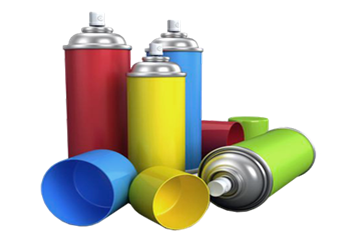
Aerosol Can

Do not pierce, crush or flatten an aerosol can.
Hair spray, spraypaints, bug spray, deodorant and cooking oil spray are some examples of products in aerosol cans. The first aerosol can patent was awarded in 1926 to Erik Rotheim, a Norwegian chemical engineer.
Aerosol cans dispense everything from cleaning products to whipped cream. They work by a process of having one fluid stored under high pressure pushing another fluid out of the can.
The main part of the aerosol can is the outer casing, and 90 percent of these are made from tin-plated steel. The remaining 10 percent are made from aluminium. Both types are recyclable. Aerosol cans also contain some small plastic and rubber components including the lid, valve and dip tube.
The World Counts website has a counter showing how many aluminium cans have been recycled so far this year. Scroll down to read how much energy is saved when this important resource is recycled - it's huge!
See also can, tin can, aluminium can
Buy refillable atomiser bottles.
Make your own pest repellants, deodorant, hair products.
Aerosols can be stored for a long time, so keep half-empty cans if possible.
If you have partly-filled cans, see if a family member or neighbour could use them.
Aerosol cans are accepted at the Whanganui Resource Recovery Centre for recycling: look for the container hanging above the fadge for tins inside the forecourt. Place the can plus nozzle and lid in the container, as WRRC staff will separate and recycle the parts as appropriate.
Where do all the aerosol cans go?
Ensure can is completely empty.